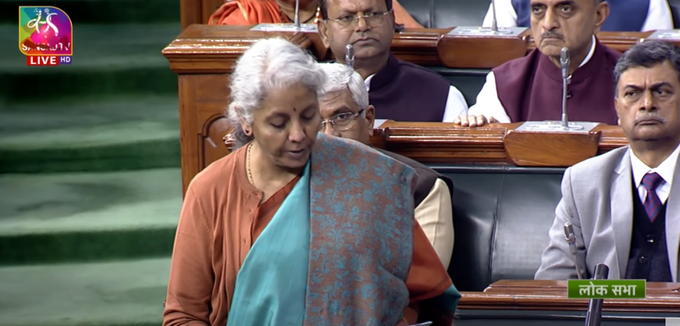
Economic Survey: Govt is on track to meet the fiscal deficit target for FY23

The Economic Survey, presented in Parliament on Tuesday, lauded the government for its “prudent and calibrated fiscal response, which enabled stable public finances even in the face of current uncertainties” and stated that the government is on track to meet the fiscal deficit target for FY23.
According to the Economic Survey, the budget deficit for the current fiscal year is anticipated to be Rs 16.61 lakh crore or 6.4 per cent of GDP. For April-November, it was Rs 9.78 lakh crore, or 58.9 per cent of the budget estimate, which was lower than the five-year moving average of 104.6 per cent for the same period. In the previous year, it was 46.2 per cent. This gradual fall in the Union government’s budget deficit as a percentage of GDP, in line with the government’s fiscal glide path, is due to diligent fiscal management aided by robust revenue collection over the last two years.
Also read: ‘Pent-up’ demand driving chunk of economy, govt admits in Economic Survey
Unprecedented capex
In absolute terms, the Government of India projected an unprecedented 7.5 lakh crore in capital expenditure for FY23, of which more than 59.5 per cent was spent between April and November 2022. As a result, capital expenditure increased by more than 60 per cent yearly during this time, exceeding the long-term average growth of 13.5 per cent observed in the equivalent period from FY16 to FY20.
According to the Survey, the Union Budget for FY23 was presented in a recovering but uncertain macroeconomic situation, failing to anticipate the geopolitical changes that occurred during the year. As the European conflict erupted early in the year, it exacerbated supply interruptions and negatively influenced the pricing of petrol, food, and other vital goods.
It stated that the government’s fiscal policy response required increased spending on food and fertiliser subsidies and targeted duty reduction to prevent the pass-through of high imported prices to consumers/users. As a result, despite increasing budgetary resource pressures throughout the year, the Union Government is on pace to meet the fiscal deficit target for FY23.
Interest payments
During the pre-pandemic years, another critical component of revenue spending — interest payments — had maintained a constant ratio of non-debt receipts to revenue expenditure. During the epidemic, the Union Government borrowed more money because of increased resource requirements and reduced tax collections. Following the pandemic epidemic, interest payments as a percentage of collections increased.
However, as we proceed along the fiscal glide path, buoyancy in revenues, aggressive asset monetisation, efficiency gains, and privatisation would help pay down the public debt, lowering interest payments and freeing up funds for other priorities in the longer run.
The Economic Survey pointed out that economic growth’s durability explains the continuous revenue buoyancy observed throughout the years. However, the fact that revenues have expanded at a considerably faster rate than GDP, demonstrates the effectiveness of the government’s efforts to broaden the tax base and improve tax compliance. Structural reforms such as the implementation of GST and the digitisation of commercial transactions have resulted in increasing formalisation of the economy and, as a result, an expansion of the tax net.
In addition, other tax administration/policy measures, such as the Faceless Assessment and Appeal, simplification of return filing, assistance to taxpayers in becoming acquainted with the systems, generation of e-way bills under the GST system, and information sharing between government departments, among others, have pushed for higher tax compliance through technology and artificial intelligence.
Direct taxes up
Direct taxes, which account for over half of total GTR, increased by 26 per cent year-on-year from April to November 2022, thanks to increases in business and personal income taxes. The major direct tax growth rates seen during the first eight months of FY23 were much more significant than their corresponding longer-term norms. The government’s emphasis on capital spending, notably in infrastructure-intensive industries such as roads and highways, railroads, and housing and urban affairs, will have long-term consequences for growth.
Also read: Economic Survey: Govt banking on private sector to shore up jobs
While capital spending boosts aggregate demand and crowds in private spending during times of risk aversion, it also improves long-term supply-side productive capability. As a result, capital spending has played a part in recent signals of a revival in private-sector investments.
To encourage states to increase capital expenditure from all angles, the Centre offered multiple incentives in the shape of long-term interest-free loans and capex-linked supplementary borrowing provisions.


